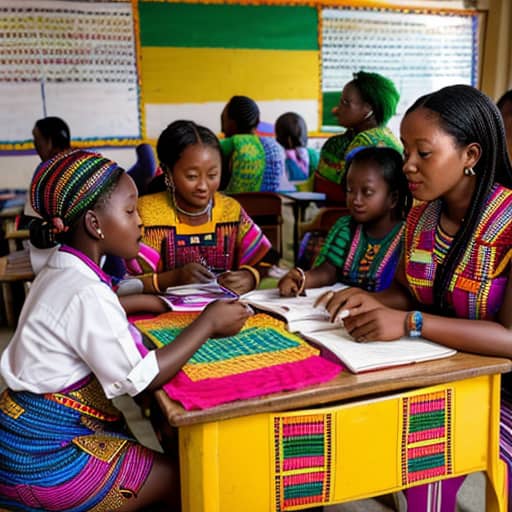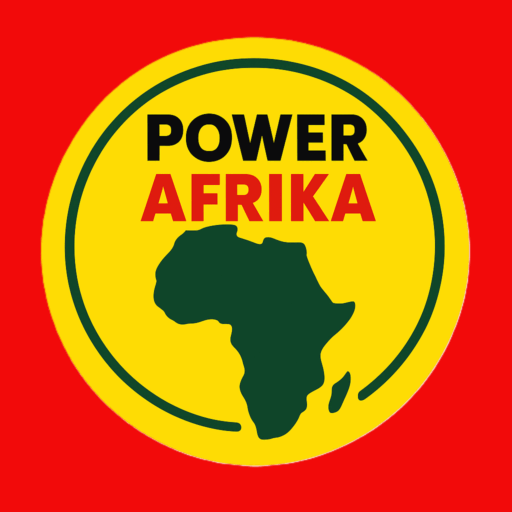
Introduction: The Classroom and the Market Stall
In a sunlit classroom in Kumasi, 12-year-old Ama hesitates as her teacher drills multiplication tables in English. Her voice trembles and her answers are fragmented. Yet, just hours later at her mother’s bustling plantain stall, Ama transforms completely. With the ease of native fluency in Twi, she calculates change, negotiates bulk discounts, and mentally tracks the stall’s inventory—all while balancing a toddler on her hip. To her teacher, Ama is labelled a “slow learner”; to her mother, she is a prodigy.
This paradox lies at the very heart of Ghana’s educational crossroads. For decades, schools have clung to colonial-era pedagogies that prize rote memorization and foreign languages, sidelining the rich spectrum of intelligence that thrives in everyday Ghanaian life. But a quiet revolution is brewing—a renaissance that seeks to redefine brilliance by honouring Ghana’s linguistic tapestry and diverse cognitive strengths.
As Dr. Ekua Yankah, an Accra-based educator, insightfully observes, “Our children aren’t empty vessels. They’re libraries of ancestral wisdom waiting to be cataloged.” Such an ethos demands that our educational practices evolve, embracing the full range of human intelligence and grounding learning in the language and culture of the people.
The Tyranny of Rote Learning
Ghana’s education system, steeped in traditions from the colonial era, has long relied on rote memorization—a method that prioritizes repetition and short-term recall over critical thinking and creativity. Students are expected to memorize facts, figures, and foreign texts, often at the expense of practical problem-solving skills that would otherwise enable them to navigate the world with confidence. For instance, while pupils may recite the tributaries of the Thames with precision, they often struggle to devise locally inspired solutions—like designing flood-resistant drainage systems that reflect indigenous knowledge and techniques.
The consequences of this approach are palpable. A significant percentage of Ghanaian youth face unemployment, as employers increasingly demand creative, analytical, and adaptable thinkers rather than mere repositories of memorized data. Moreover, with roughly 75% of Ghanaian children taught exclusively in English—a language that, for many, is not their first—the disconnect between academic instruction and home life grows ever wider. The system’s reliance on a single mode of learning stifles the natural curiosity and multifaceted intelligence inherent in every child.
Yet, these challenges are not a call for despair but a clarion call for transformation. The limitations of rote learning illuminate the necessity to widen our understanding of what it means to be intelligent.
Ghana’s Mosaic of Intelligences
In 1983, psychologist Howard Gardner introduced the theory of multiple intelligences, proposing that human cognition is not a single, uniform capacity but rather a constellation of diverse abilities. This framework is strikingly congruent with the Ghanaian experience—a nation rich in oral traditions, vibrant art, and communal wisdom.
Linguistic Intelligence: Ananse’s Web of Words
The Ashanti tradition of Anansesem—intricate spider tales passed down through generations—serves as much more than entertainment. These narratives are cognitive exercises, interweaving logic, morality, and metaphor. A University of Ghana study in 2021 found that students exposed to problem-solving in Twi outperformed their peers taught solely in English. As linguist Dr. Abena Ampofo succinctly puts it, “Language isn’t just a tool—it’s a scaffold for thought.”
Spatial Intelligence: Kente’s Algorithmic Threads
In the village of Bonwire, master weaver Kwasi Asante crafts exquisite kente cloth, each vibrant pattern a tapestry of geometry and symbolism. Whether it is the design of Nsoromma (stars) or the proverb-laden Emaa Da (it has not happened before), these patterns embody spatial and algorithmic intelligence. “My loom is my calculator,” Asante jovially remarks, reflecting a deep-seated understanding of symmetry and design that transcends mere aesthetics. This tradition has even inspired modern architects in Ghana to incorporate kente’s geometrical precision into earthquake-resistant building designs.
Bodily-Kinesthetic Intelligence: The Physics of Kpanlogo
At community festivals, the Gas’ Kpanlogo dance is a masterful display of rhythm and movement. Dancers manipulate gravity and momentum with skill, their bodily-kinesthetic intelligence on full display. At Takoradi Technical University, engineers are drawing inspiration from these traditional moves, using motion-capture technology to integrate the dynamics of dance into practical modules on fluid mechanics and robotics.
Naturalist Intelligence: Wisdom Grown on Trees
In Tamale, local farmers gauge the onset of rains by observing the blooms of the baobab tree—a skill honed over generations. “Our ancestors didn’t need satellites,” asserts agricultural activist Fatima Alhassan. This indigenous knowledge system, deeply rooted in naturalist intelligence, sustains a significant portion of Ghana’s food production. It exemplifies a holistic understanding of the environment that modern science is only beginning to appreciate.
Interpersonal Intelligence: Ubuntu in Action
Ghana’s communal ethos is beautifully encapsulated by the Akan proverb “Nsa baako nkura adeɛ” (One hand cannot lift a heavy load). From traditional chieftaincy councils to modern tech hubs in Accra that foster collaborative innovation, the ability to work together harmoniously is central to Ghanaian identity. This interpersonal intelligence underpins initiatives where communities resolve conflicts and co-create solutions that benefit everyone.
Tongue-Tied No More: Mother Tongues as Cognitive Catalysts
Ghana’s linguistic diversity—boasting over 80 languages—is a treasure trove of cognitive resources. However, the educational system’s emphasis on English often sidelines these native tongues. Yet, research from the Ghana Education Service indicates that children taught in their mother tongues during their early years exhibit up to 30% higher retention in STEM subjects.
Consider the case study from Cape Coast’s Adinkrahene Academy: Here, 14-year-old Kofi developed an innovative app to track illegal fishing in local waters, coding entirely in Fante. “When you code in the rhythm of your heartbeat, solutions feel natural,” says Nana Kwame, the academy’s founder. Such narratives illuminate how education in one’s native language not only strengthens academic comprehension but also nurtures cultural pride and identity.
By restoring mother tongue instruction, Ghana can transform its classrooms into vibrant spaces where learning is both accessible and deeply connected to cultural heritage. It is a pathway to empowerment—one that reaffirms the idea that true intelligence is not measured solely by one’s ability to memorize facts in a foreign tongue but by the capacity to innovate, problem-solve, and lead.
Weaving a New Tapestry—Policy Meets Grassroots
Realizing this educational renaissance in Ghana requires a cohesive effort that marries policy reform with grassroots innovation. Here are several pathways to effect change:
A. Curriculum Revolution
In 2024, Ghana’s National Literacy Framework took a bold step by mandating mother tongue instruction until Primary 4. Early adopters in regions like Sunyani have reported significant increases in creativity and problem-solving skills among students. For example, pupils are now tackling algebra using Adinkra symbols, a practice that not only bridges cultural heritage with modern mathematics but also makes abstract concepts more tangible. As teacher Yaa Ansong explains, “Math is universal, but understanding is cultural.”
B. Technological Bridges
Digital tools offer unprecedented opportunities for personalized, culturally relevant education. In Kumasi, the LangBot app gamifies Ga and Ewe vocabulary, engaging over 500,000 users with interactive lessons in local dialects. Meanwhile, tech giants like Microsoft are partnering with Ghanaian linguists to develop AI tools that use Twi for applications in maternal healthcare, thereby reducing diagnostic errors in rural clinics. These innovations demonstrate that technology when harnessed creatively, can bridge traditional wisdom and modern education.
C. Grassroots Cultural Revival
Cultural festivals, such as Accra’s Chale Wote, have become hubs for educational innovation. At these events, young people merge traditional practices with modern technology—coding chatbots beside drummers and muralists. Artist Serge Attukwei Clottey captures this spirit when he says, “Tradition isn’t the opposite of innovation; it is the foundation upon which we build our future.” Such initiatives underscore the transformative potential of integrating cultural heritage into everyday learning.
D. Community Engagement and Teacher Training
For these new methodologies to thrive, educators must be equipped with the skills and resources necessary to implement them effectively. Professional development programs focused on multiple intelligences and mother tongue instruction can empower teachers to transition away from traditional lecture-based methods. Furthermore, community-led initiatives—where parents, local leaders, and educators collaborate—can ensure that educational reforms are both culturally grounded and practically effective.
Conclusion: A Symphony of Minds
Ghana stands at the cusp of a hidden renaissance—one where the power of language, tradition, and diverse human intelligence coalesce to redefine what it means to be educated. In a nation where a classroom lesson in Kumasi can seamlessly transform into a market stall negotiation in Twi, true intelligence is found not in rote memorization, but in the rich, lived experiences of its people.
By integrating multiple intelligences into the curriculum and reinstating mother tongue education, Ghana can unlock a reservoir of untapped potential. This transformation is not merely academic—it is the bedrock of national empowerment, fostering creativity, economic resilience, and cultural pride. It is a call to action for educators, policymakers, and communities alike: to reimagine a system that honours the full spectrum of human ability and celebrates the Indigenous wisdom that has always been at the heart of Ghanaian life.
Ama, the bright student from Kumasi, is now a testament to what is possible when education speaks the language of the people. Recently, she designed a rainwater harvesting system inspired by her grandmother’s age-old clay pots—a project that not only improved her grades but also offered a sustainable solution for her community. Her story, like those of countless others across Ghana, illustrates that when learning is aligned with cultural legacy, it becomes a powerful agent of change.
In the words of a Ghanaian proverb, “A tree is known by its fruit.” Let us nurture our educational forests so that they yield a bountiful harvest of innovation, resilience, and unity—a harvest that not only feeds the minds of today but also fortifies the future of Africa.
This is our call to redefine education for empowerment. By embracing our linguistic heritage and celebrating diverse intelligences, Ghana—and by extension, Africa—can lead a renaissance that reclaims its intellectual legacy and propels its people into a future of sustainable prosperity.
